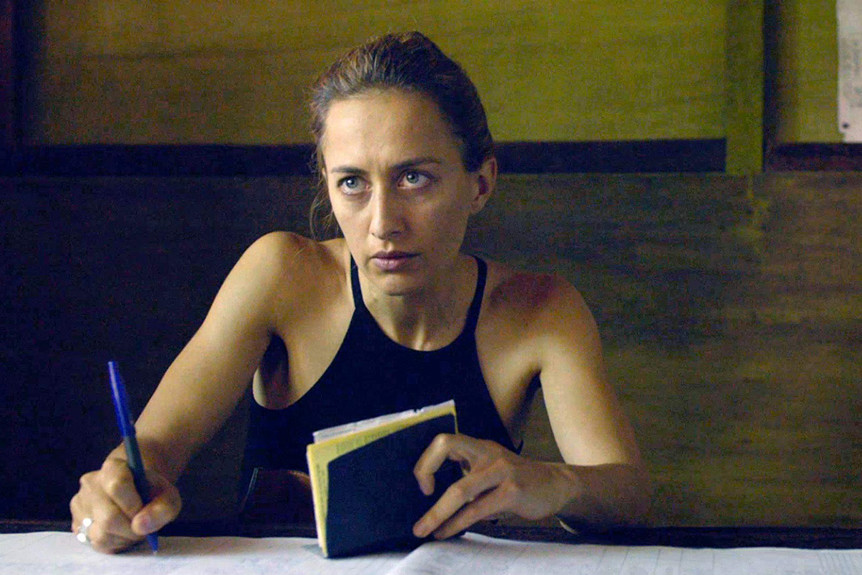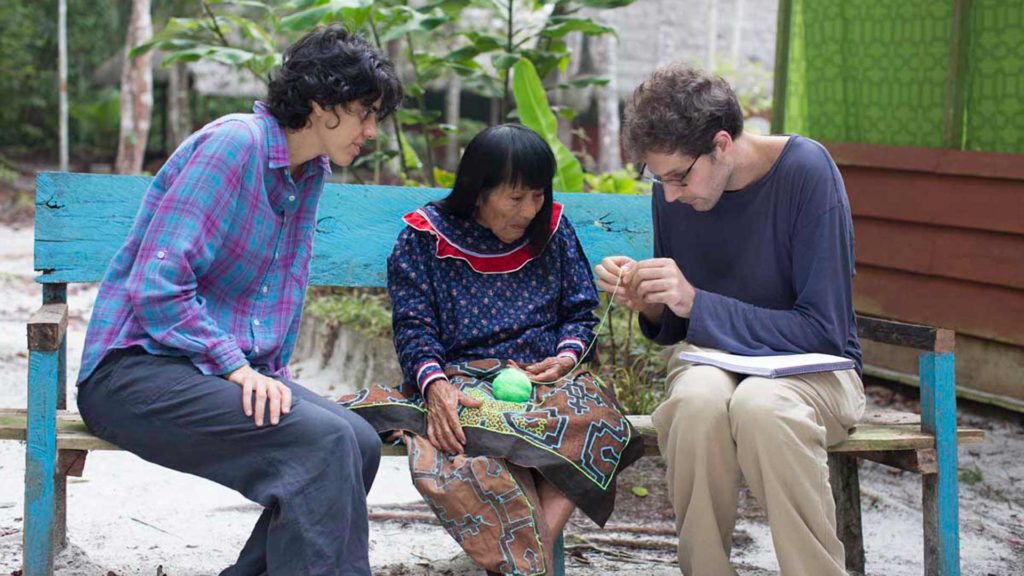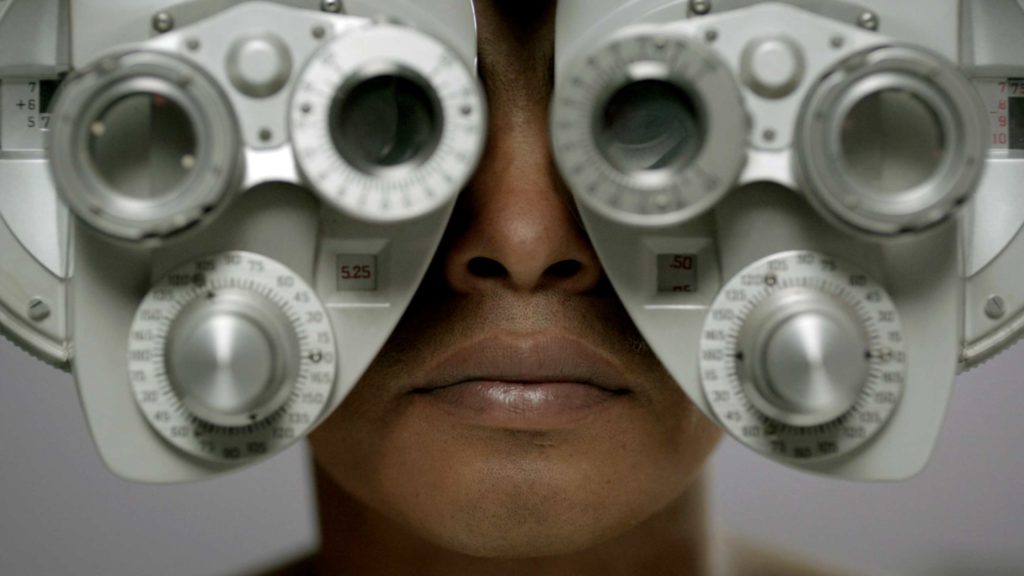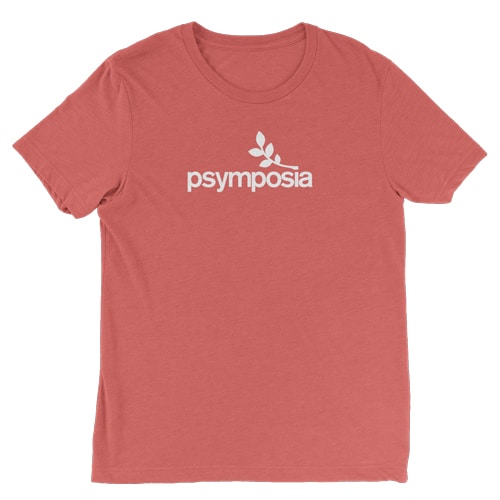Caraballo & Norzi’s new film ‘Icaros: A Vision’ reinvents the aesthetic of psychedelics on screen.
Icaros: A Vision opens Friday, May 19th 2017 at Metrograph in NYC, followed by a national rollout in several cities in the U.S. and overseas.

Psymposia is a 501(c)(3) nonprofit research and media organization that offers critical perspectives on drugs, politics, and culture. We rely on contributions from our readers and listeners. Your support is vital to sustaining Psymposia.
Support Psymposia’s independent journalism on Patreon and help us drive the Mystery Machine! We’re a bunch of meddling kids who are unmasking the latest shenanigans on the psychedelics beat.
Icaros: A Vision opens Friday, May 19th 2017 at Metrograph in NYC, followed by a national rollout in several cities in the U.S. and overseas. Co-director Matteo Norzi joined us from New York City where, among his many projects, he co-founded The Shipibo Conibo Center of New York, a 501(c)(3) “set up to promote and perpetuate the creative life-ways and knowledge of the Shipibo Conibo people of the Peruvian Amazon.” The film follows an American woman seeking healing in the Amazon, her story mirroring the real life story of late co-director Leonor Caraballo, who succumbed to breast cancer before the completion of the film.
Thanks for taking the time to speak with me about your remarkable film, Icaros. I had the chance to see it over the weekend—for me, it’s one of the few films touching on ayahuasca that convey the amoral poetry of the experience and of shamanism in general.
I want to start off with the title. Why Icaros?
Icaros are the legendary songs of Amazonian shamanism. From the very beginning of our research, we were amazed by such a concept: songs with healing power; secret and sacred chants learned from a plant’s spirit; melodies received in isolation while on a strict regime of plant-diet. These sounds felt so incredibly interesting and otherworldly, we decided to follow them to Peru and then deeper into an exploration of our consciousness, all the way to the verge between the realm of the living and the dead. Together with the ayahuasca brew, these songs constitute a sophisticated technology. Shamans use them for a variety of specific purposes, including diagnosis and treatment. Sound is the tool to trigger and orchestrate the visions. Our film was conceived along this very same synesthetic path.
What of the ayahuasca experience itself was important to convey on screen and why?
We tried to re-invent the aesthetic of psychedelics, avoiding the clichés of the colorful motifs of the ’60s. Ayahuasca is said to be a spiritual x-ray machine, or the television of the forest. With these ideas in mind, in order to picture the experience of the ceremony, we played with the devices that, in the West, are used to generate visions: MRI, TV, video games, ophthalmologist’s tools, etc. This is a statement that aims to place ayahuasca on the same level with these other technologies.
Sadly, your co-director Leonor Caraballo, succumbed to breast cancer while you were completing the film. It’s been suggested in other pieces that the stress of making the film may have exacerbated her illness. Do you think she saw herself as, in part, sacrificing her life for this film?
Leonor wanted to live. With determination, creativity, curiosity, and passion, she researched about her disease both artistically and medically. She experimented on her own body every possible available treatment, from the most advanced clinical trials, to a number of alternative therapies. When she got introduced to shamanism and fell in love with the great Shipibo Conibo people, she was stunned by the detachment they so often express toward destiny. In one of her first journeys, she had not only a pretty detailed premonition that her time was coming, but she also realized the urgency of accomplishing this work. The film is driven by the conviction that acknowledging the power of plants is the only way to change the jeopardized future of the Amazon—itself like a dying patient. The exploitation of Shipibo lands and communities by oil and timber companies continues. The women and men who have the knowledge of healing plants are finding few in the younger generation who will cultivate their practices. Thus, part of the film’s goal is to bring attention to the work, life, and knowledge of the Shipibo Conibo people. Icaros is truly an afterlife project in this sense. Abou Farman wrote about the backstory of the film in The Walrus, more sensibly than anyone could, being both the producer and Leonor’s partner.

What is the ideal impact you’d like the film to have in terms of the message audiences take away from it?
This is meant to be a healing film, for the filmmakers as well as for the audience. It’s a ceremony in itself, a shared vision, an experiential piece really intended for the big screen. It’s a non-traditional form of narrative, a hybrid, a chimera, not fully linear but instead shaped like a shamanic journey. It’s for the great women and men of the Amazon. It’s to prove that plants are much more valuable than the market price of the logs they are chopped for. It’s to raise attention on plant-intelligence toward an anthropology beyond the human. It’s for the influence of ayahuasca to spread with poetry. It’s the life-changing adventure I had the honor to live. It’s by Leo, with Leo, and for Leo. Not yet sure about the ideal impact, but these are our intentions.
Colonialism in South America and the Amazon is nothing new. The relatively recent resurgence of interest in ayahuasca and shamanism has altered much. What in your opinion has been positive, and what is negative? Where can we as Westerners be better allies to indigenous plant teachers and providers?
The consequences of colonialism are still very prominent in the Amazon, especially because of that second wave of barbarities against the indigenous people committed during the years of the rubber boom. Peru is a divided country, where all the power is in Lima—basically still in the hands of European descendants. Indigenous representation in congress is barely any, and the Amazon is to these days, de facto, a colony. Despite the pressure coming from environmental activism worldwide, the forest is treated as if it were an infinite reservoir of resources to exploit: oil, gold, gas, logs, coca, etc. However, in the spiritual realm, shamanism has been somehow able to survive through such tumultuous history. It’s an ever-changing force able to adapt and transform. That is why I do not think it’s seriously threatened by the resurgence of interest in ayahuasca—perhaps the opposite. Obviously it will change. But while many worry about the risk of loss in the process, I’m actually convinced that these practices are syncretic in nature and are benefiting of contamination. I don’t like to use the word tradition at all actually, as it feels too compromised with the past.
I’d like to shift the conversation on the indigenous identity of the future; on how shamanism has the potential to mix in with new technology; on the relevance of indigenous wisdom in these post-modern times. However, going to the Amazon to drink ayahuasca does come with a responsibility. Yes, Westerners can and should become allies to plant teachers and providers as long as the relationship with the other is not just about taking. I address this criticism also to the scientific community. Everyone is now cheering for a renaissance of psychedelic research. Although it’s shameful and also not very smart if this happens while leaving indigenous expertise out of the picture. For our part, the contribution as an extension of the life of the film is the Shipibo Conibo Center of NY, a nonprofit organization dedicated to continue the work in this field with the commitment of proposing models alternative to the previously described dynamics.

One thing I found refreshing about the film was how it humanized the shaman. There seems to be a tendency to create gurus in the West, and shamanism does not conveniently align to the guru tradition. Were you conscious of this while making the film and constructing the character?
Prepping of the film, we spend almost three years on and off with the shamans and their families. We traveled together upriver back to the remote Shipibo communities. It’s rarely mentioned, but actually medicine women and men often emigrate from their homes in order to work in healing-centers at locations more accessible to tourists. We became friends and learned about each other. This is how we got wary of any kind of romanticized idea of the indigenous. Westerners often approach drinking ayahuasca in the Amazon knowing little about its cultural context. For most people, even in the field of anthropology and psychedelic research, it seems impossible to move away from some kind of archetypical characterization of the noble savage, someone who has not yet been corrupted by civilization, and therefore symbolizes humanity’s innate goodness. This is a naïve mystification that perhaps reflects the desperation of a West in search of its own lost soul. This often leads to a puritan sense of disillusion whenever the idols are exposed as not flawless at all. Reality is that shamans are human for the good and the bad. That’s why we opted to portray them with their families in a daily routine in which the Westerners are called pasajeros, or passengers, a term that captures the transience of the encounter. Moreover, not only are shamans human, but they also master alterity, being able to embody many persons at the same time. They rule the kingdom of ambiguity, duality, multiplicity.
The emphasis on Amazonian shamanism as a healing practice is likely a misunderstanding of its core identity. It’s striking that when ayahuasca is imported into Western discourses, everything seems to be about the way of light. Forget not the dark side of the moon! Jeremy Narby wrote a great contribution to the recently published anthology The Ayahusca Reader, reporting about shamans as shape-shifters and how they tend to identify with predators such as jaguars, and definitely have not sworn to the Hippocratic Oath. With this I do not mean to suggest that shamans cannot help people—quite the opposite. Modern society suffers so much for the lack of rites of passage. Ayahuasca is properly one of those transformative experiences, with all the implications in terms of risks and opportunities. Let’s not attempt to make it become just another commodity.
Hey! Before you go… Psymposia is a 501(c)(3) non-profit media organization that offers critical perspectives on drugs, politics, and culture. We strive to ask challenging questions, and we’re committed to independent reporting, critical analysis, and holding those who wield power accountable.
Our perspectives are informed by critical analysis of the systemic crises of capitalism that have directly contributed to the unmitigated growth of addiction, depression, suicide, and the unraveling of our social relations. The same economic elite and powerful corporate interests who have profited from causing these problems are now proposing “solutions”—solutions which both line their pockets and mask the necessity of structural change.
In order for us to keep unpacking these issues and informing our audience, we need your continuing support. You can sustain Psymposia by becoming a supporter for as little as $2 a month.





